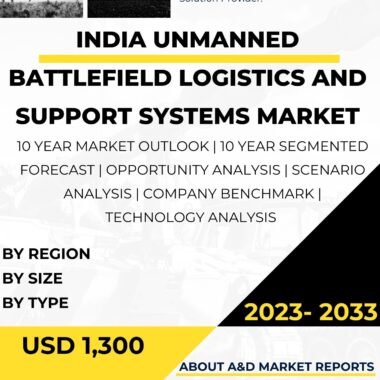Description
The unmanned ground vehicles (UGVs) market in Singapore has witnessed significant growth in recent years, driven by the country’s commitment to enhancing its defense capabilities, improving security and surveillance capabilities, and leveraging emerging technologies to support various sectors. Unmanned ground vehicles refer to autonomous or remote-controlled vehicles designed to operate without human intervention, offering a wide range of applications in military, security, logistics, and other fields. This article provides an overview of the Singapore unmanned ground vehicles market, including key drivers, major players, applications, challenges, and future prospects.
Singapore’s commitment to defense modernization and readiness has been a primary driver for the growth of the unmanned ground vehicles market. As a small nation with limited manpower and strategic interests, Singapore recognizes the importance of leveraging autonomous technologies to enhance its military capabilities. Unmanned ground vehicles play a critical role in supporting defense operations, offering surveillance, reconnaissance, and logistical support in challenging and dangerous environments.
The country’s focus on adopting emerging technologies and fostering innovation in defense has also contributed to the demand for unmanned ground vehicles. Singapore has actively explored the application of advanced technologies, such as artificial intelligence (AI), robotics, and autonomous systems, in various sectors, including defense. Adopting unmanned ground vehicles aligns with Singapore’s vision of becoming a smart and technologically advanced defense force.
Furthermore, the growth of the unmanned systems industry in Singapore has supported the development of unmanned ground vehicles. The country’s defense industry has been actively involved in research, development, and production of unmanned systems, robotics, and autonomous technologies. Collaborating with international defense companies also allows Singapore to access cutting-edge unmanned technologies and benefit from their expertise in designing and producing advanced ground vehicles.
The applications of unmanned ground vehicles in Singapore are diverse and extend beyond military operations. One of the primary applications is in military reconnaissance and surveillance. Unmanned ground vehicles equipped with advanced sensors and cameras can gather real-time intelligence and conduct surveillance in hazardous areas or hard-to-reach locations, supporting military decision-making and situational awareness.
Additionally, unmanned ground vehicles play a significant role in border security and law enforcement. These vehicles can be deployed for patrol and monitoring activities along borders, critical infrastructure, and public spaces, enhancing security and response capabilities.
Unmanned ground vehicles also find applications in hazardous material handling and disaster response. In situations where human intervention poses risks, such as in chemical spills or nuclear incidents, UGVs can be used for containment, cleanup, and remote inspection tasks.
The logistics and supply chain industry in Singapore also benefits from unmanned ground vehicles. These vehicles can be deployed in warehouses, ports, and industrial facilities for materials handling, inventory management, and transportation, improving operational efficiency and reducing human labor requirements.
The unmanned ground vehicles market in Singapore also faces certain challenges. One significant concern is the development and integration of AI and autonomous technologies to ensure safe and efficient operations. Ensuring reliable communication and coordination between unmanned ground vehicles and manned assets is crucial for effective joint operations.
Moreover, cybersecurity and data protection are critical considerations when deploying unmanned ground vehicles. Securing communication links and data transmission to prevent unauthorized access and potential cyber-attacks is of utmost importance in military and security applications.
Looking ahead, the future prospects for the Singapore unmanned ground vehicles market remain positive. As the country continues to prioritize defense modernization and invest in emerging technologies, the demand for advanced unmanned ground vehicles is expected to grow. The ongoing collaboration with international defense companies and the growth of the domestic defense industry will further fuel market expansion.
Moreover, advancements in unmanned technologies, such as improved autonomy, mobility, and sensor capabilities, present new opportunities for the market. These developments can significantly enhance the capabilities and versatility of unmanned ground vehicles, enabling them to undertake more complex and diverse missions.
In conclusion, the unmanned ground vehicles market in Singapore has experienced significant growth, driven by the country’s commitment to defense modernization, technological innovation, and leveraging unmanned systems in various sectors. Unmanned ground vehicles play a critical role in military reconnaissance, security, logistics, and disaster response. While challenges related to AI integration, cybersecurity, and communication exist, the market’s future appears promising, driven by Singapore’s focus on defense modernization and technological advancements in unmanned ground vehicles.




